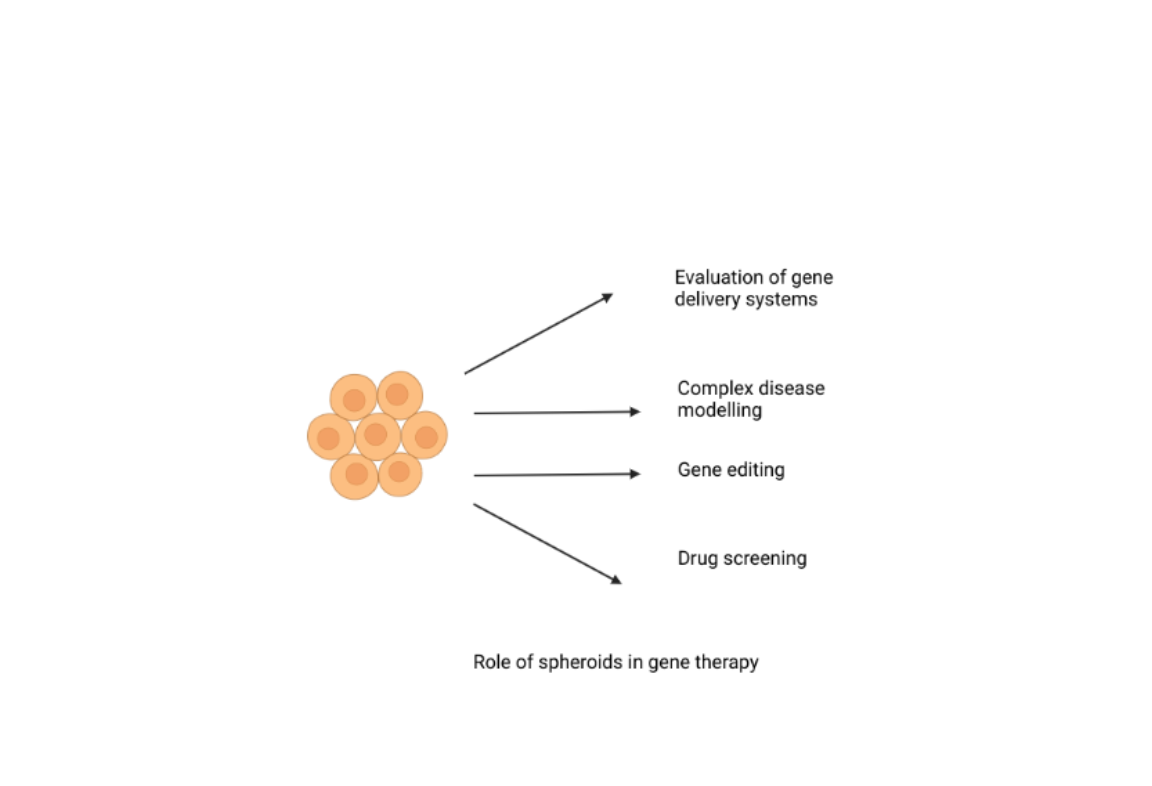
The role of spheroids in gene therapy
Spheroids are multicellular cell aggregates that self-assemble in 3D structures when cultivated in an environment that prevents attachment to the artificial surface, such as BIOFLOAT 96-well plates with their anti-adhesive properties.
Spheroids can be generated from a wide range of cell types resulting in tumor spheroids, embryoid bodies, neurospheres, and mammospheres, among others. Therefore, spheroids have their applications in many different contexts such as drug screening, disease modeling, investigation of tissue formation and pathologies development, biofabrication, and 3D bioprinting (1).
This article presents the role of spheroids in gene therapy (2,3,4):
1. Evaluation of gene delivery systems: Since spheroids mimic cells´ in vivo environment better than traditional two-dimensional cell cultures, they can be used to evaluate the efficiency of gene delivery systems, with both viral and non-viral vectors. Thus, researchers can assess the efficacy of gene delivery systems to ensure maximum therapeutic potential while minimizing cytotoxicity.
2. Complex disease modeling: Spheroids can be used to model complex diseases that involve multiple cell types, such as cancer. By incorporating different cell types into spheroids, researchers can study the interactions between these cells and the further effects of gene therapy interventions on the tumor microenvironment. This can help in the development of more targeted and effective gene therapies for cancer treatment.
3. Gene editing: Spheroids can be used as a tool for the investigation of gene editing techniques like CRISPR-Cas9. Scientists can introduce, delete, or correct genetic mutations in spheroids, and study the effects of these genetic changes on cell function and behavior. This provides insight into the role of specific genes in the development of diseases and supports the development of gene therapies to address them.
4. Drug screening: Spheroids can be used for drug screening to test toxicity. Researchers can use spheroids to test the efficacy and toxicity of gene therapies, and screen for potential side effects. This allows for optimizing gene therapies to maximize their therapeutic potential while minimizing adverse side effects.
References
1. Białkowska K, Komorowski P, Bryszewska M, Miłowska K. Spheroids as a Type of Three-Dimensional Cell Cultures-Examples of Methods of Preparation and the Most Important Application. Int J Mol Sci. 2020 Aug 28;21(17):6225. doi: 10.3390/ijms21176225. PMID: 32872135; PMCID: PMC7503223.
2. El Harane S, Zidi B, El Harane N, Krause KH, Matthes T, Preynat-Seauve O. Cancer Spheroids and Organoids as Novel Tools for Research and Therapy: State of the Art and Challenges to Guide Precision Medicine. Cells. 2023 Mar 24;12(7):1001. doi: 10.3390/cells12071001. PMID: 37048073; PMCID: PMC10093533.
3. Jakeman PG, Hills TE, Tedcastle AB, Di Y, Fisher KD, Seymour LW. Improved in vitro human tumor models for cancer gene therapy. Hum Gene Ther. 2015 May;26(5):249-56. doi: 10.1089/hum.2015.028. Epub 2015 Apr 20. PMID: 25808057.
4. Osswald A, Sun Z, Grimm V, Ampem G, Riegel K, Westendorf AM, Sommergruber W, Otte K, Dürre P, Riedel CU. Three-dimensional tumor spheroids for in vitro analysis of bacteria as gene delivery vectors in tumor therapy. Microb Cell Fact. 2015 Dec 12;14:199. doi: 10.1186/s12934-015-0383-5. PMID: 26655167; PMCID: PMC4676896.



